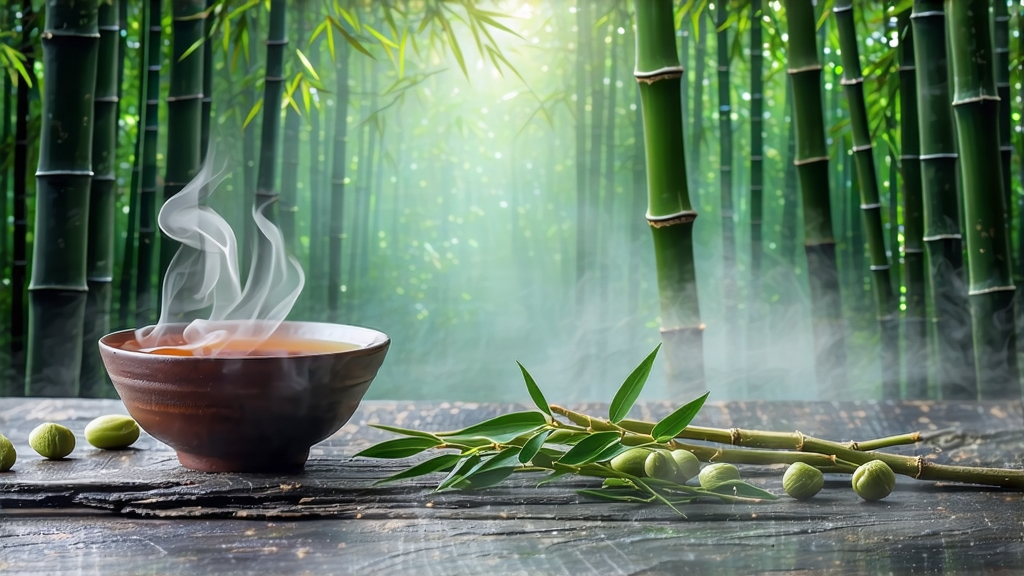
High above the Sichuan Basin, where the Min River bends like a jade ribbon through emerald mountains, lies Meng Ding Mountain, the cradle of the world’s oldest cultivated tea garden. Here, shrouded in perennial cloud and rinsed by spring mists, the legendary Meng Ding Huang Ya—literally “Meng Ding Yellow Bud”—has been coaxed into existence for more than twelve centuries. Unlike the better-known green teas that flash-freeze freshness in a wok, or the post-fermented dark teas that age like wine, yellow tea walks a narrow, perilous path between the two: a slow, secretive “smothering” or men huang that nudges the leaf toward oxidation without ever letting it tip over the edge. The result is a liquor the color of old gold, a fragrance that drifts between orchid and toasted pumpkin seed, and a texture so velvety it feels like drinking warm light.
Historical whispers place Meng Ding Huang Ya on the Tang dynasty tribute roster as early as 724 CE, when carriage-loads of the downy buds were dispatched along the Jiannan Road to Chang’an, wrapped in silk and guarded by cavalry. Song dynasty poet Lu You, exiled to Sichuan, wrote of “a tea that hides the sun in its belly,” an oblique but unmistakable homage to the tiny sun-colored hairs that cling to each bud. By the Ming, the imperial court had fixed the tribute quota at 360 jin—roughly 180 kg—an amount so small that every pluck had to be a prayer. The Qing added a twist: only buds picked before the Qingming festival, while morning dew still clung to them, were deemed fit for the Son of Heaven. Thus the tea acquired an aura of calendar-bound rarity that persists today; modern makers still speak of “before-the-rain” and “after-the-rain” lots with the hushed reverence vintners reserve for grand crus.
Botanically, Meng Ding Huang Ya is a single-origin cultivar, Camellia sinensis var. sinensis, clone “Meng Ding #9,” selected for its diminutive leaf, slow spring flush, and unusually high ratio of soluble sugars. The garden itself sits between 800 and 1,400 m on Pre-Cambrian sandstone, its topsoil laced with bamboo leaf humus that acts like a natural water regulator. Night temperatures can plunge ten degrees below the daytime high, a diurnal swing that condenses amino acids and aromatics into the nascent bud. Local growers insist that the mountain’s cloud cover filters ultraviolet light, lengthening the photoperiod and allowing the leaf to synthesize more theanine, the compound responsible for the tea’s signature brothy sweetness.
Harvest unfolds in a three-act performance. Act I: “Heaven’s Gift,” the first five days after Qingming, when only the unopened bud or the bud-and-single-leaf set is snipped with fingernails to avoid bruising. Act II: “Earth’s Reply,” the following week, when a bud-and-two-leaves standard is accepted but still weighed to the gram. Act III: “Late Whisper,” the final week before Guyu, when the leaf has grown assertive and is diverted to lesser grades. Each kilo of finished yellow tea demands between 60,000 and 80,000 such snips, all performed by mountain women whose dexterity has been clocked at 600 plucks per minute—faster than a hummingbird’s wings, yet gentle enough not to crush the trichomes.
Withering happens not on trays but in the shade of ancient ginkgo trees, where breeze and leaf temperature are moderated by the tree’s unique fan-shaped foliage. The leaf loses about 10 % moisture, just enough to soften cell walls without provoking grassy notes. Next comes the kill-green, but here the wok is cooler (140 °C) and the hand-to-leaf contact lighter than in green tea; the goal is to arrest oxidation while preserving a whisper of enzymatic potential. Master panners roll the bud against the wok’s curved belly in a figure-eight motion said to mimic the flight of the golden pheasant, Sichuan’s totem bird. After seven minutes the leaf is removed, still jade at the core but rimmed with a pale champagne hue.
The true alchemy occurs during the 48-hour smothering stage. The partially fired leaf is piled in bamboo trays, covered with damp linen, and left in a cave-like chamber kept at 28 °C and 75 % humidity. In this steamy hush the